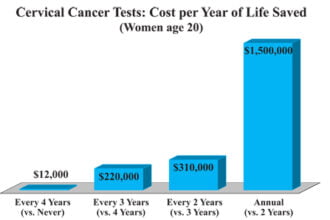Last month was tax time, and some small businesses filed at last for the health insurance tax credit included in the health reform law. Most will be disappointed. Since the Patient Protection and Affordable Care Act (PPACA) passed a year ago, its supporters have touted its benefits.
Last month was tax time, and some small businesses filed at last for the health insurance tax credit included in the health reform law. Most will be disappointed. Since the Patient Protection and Affordable Care Act (PPACA) passed a year ago, its supporters have touted its benefits. Yet, it’s important to remember why the credit does not deserve any lavish praise.
Relatively few will qualify for the credit: To qualify for the credit, a business has to jump through a series of hoops. Very likely, no more than 1 to 2 million out of the country’s 6 million small businesses would qualify for any credit at all. Self-employed individuals (another 21 million or so) do not qualify at all.
Fewer still will get the full percentage advertised: Many or most businesses who qualify will get less (maybe far less) than the maximum 35% of the employer’s portion of the premiums. The percentage shrinks if you increase your workforce; if you give them raises; if you employ a broad range of family members; if you’re more generous with your insurance than other firms are; or if you have some part-timers. The theoretical maximum rises from 35% to 50% in 2014, but only if you drop your current policy, move over into the new exchange, and buy a policy that probably costs more than what you’re now paying — maybe a lot more.
The credit discourages businesses from hiring or rewarding employees for success: If a business goes from 10 to 25 employees, the credit percentage begins to decline. As the average wage goes from $25,000 to $50,000, the percentage begins to drop off, as well. With 10 employees at $25,000 apiece, the business might get a 35% credit. If it hires 9 more employees and raises wages to $35,000, its credit is entirely gone.
The whole thing goes away fairly soon: The credit is effectively self-repealing. Once 2014 hits, a business can only get credits for insurance purchased in an exchange, and then the credit vanishes after two years. So no matter how much good the credit does a business, it isn’t going to do it for very long. This is ironic, since the law weighs small business down with loads of new taxes and other costs that go on forever.
Calculating the credit may cost more than the credit itself: It takes a good tax accountant to figure out how much, if anything, the credit is worth to a particular business. This NFIB calculator gives a first impression of the credit’s complexity. But there are many more questions an accountant has to help the business to answer: How many full-time employees can the business claim over the previous year? How many part-time hours were there? Which employees are considered family members? What were the average wages? How much were the business’s insurance premium costs — not including those that were paid for owners or family members? Some NFIB members have reported their accountants advising against trying for the credit – the accountants’ fees would exceed any possible credit.
The credit is unlikely to offset insurance cost increases: Before PPACA, businesses already experienced high rates of cost increase. The new law adds to cost growth, via a substantial tax on the insurance policies purchased by small businesses and individuals (but not by most big businesses and governments). There are new taxes on drugs and medical devices. Premiums have to pay for a range of mandatory bells and whistles. In addition to these financial costs, PPACA also brings a heavy dose of new red-tape.
A year after PPACA became law, small business is incessantly asked, “Don’t you realize that you’ll lose this credit if PPACA is overturned or repealed?” So it’s only fair that small business ask a few questions in return: If the credit is so vital, why do so few small businesses qualify? Why do even fewer qualify for anything near that 35% level? Why does the credit penalize a business for hiring new employees or giving raises? And why does PPACA effectively repeal the credit after a business spends only two years in the exchange? A two-year, highly-limited credit is a mighty poor inducement to offer employees coverage that will last indefinitely.
[CAVEAT: Despite NFIB’s concerns with the structure of the credit and the criticisms written above, we urge any small business to consult with an accountant to determine whether filing for the credit is a good idea. If they determine that filing is beneficial, then by all means the business should file and get whatever dollars the law will offer.]






